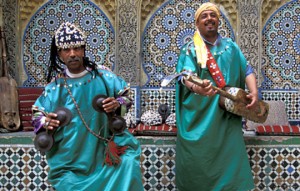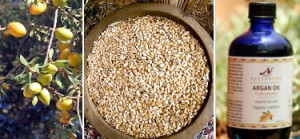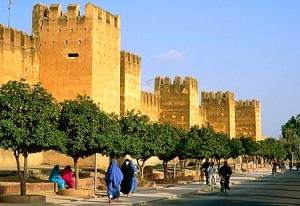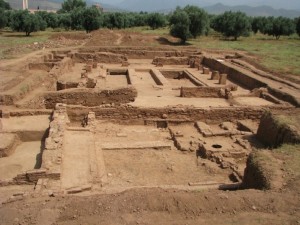Posts Tagged ‘Travel to Morocco’
Morocco’s tradition of tea dates back to the 12th century BC. There are various theories on the origin of tea in the Maghreb. Some say the Berbers (Amazigh) imported tea from Asia, while others believe that Queen Anne Stuart of Great Britain introduced tea to the Moroccan Sultan as a…
Tangier, referred to as “The Bride of the North” has long been a romantic haven frequented by artists, beat poets and writers who arrived on North African shores from the 1920’s – 1960’s seeking an exotic adventure in this “international zone.” Tangier’s allure during the 20th Century was its liberal…
TripAdvisor has awarded Travel Exploration Morocco Private Tours the 2017 Certificate of Excellence. This celebratory achievement is the result of Travel Exploration’s exceptional reviews from Morocco travelers who have shared their experiences on TripAdvisor’s website. The Trip Advisor Certificate of Excellence Award is a testament to…
Travel Exploration Morocco Private Tours has been awarded the Trip Advisor 2016 Certificate of Excellence. The Trip Advisor Certificate of Excellence Award is a testament to Travel Exploration’s High Standards and Service provided for Morocco Tours. The Trip Advisor Certificate of Excellence…
On Marrakech’s Jemma el Fna Square amongst the orange juice stalls and story tellers you will find stalls with CD’s testifying to the popularity and importance of Morocco’s contemporary music scene which began with the accession of King Mohammed VI in 1999 when greater liberalization of musical genre especially for…
In the village of Tnine in the Ourika valley Nectarome has an organic garden with aromatic plants and medicinal herbs where their products are created and a shop selling a range of soaps, shampoos aroma therapy and massage oils. There are also several outlets in Marrakech and Casablanca. The company…
If you want a relaxing stay in an authentic walled Berber town look no further than the medieval town of Taroudant. It lies beside the High Atlas mountains in the Sous Valley in the southern part of Morocco and it has retained its authentic Berber character and roots. Taroudant is…
Marrakech has been celebrating the Marrakchia Music festival since the Saadian dynasty in the 15th and early 16th century.It takes place in February each year and celebrates traditional music passed down by generations in honour of the seven patron saints or ‘Sabaatou Rijal’ of Marrakech. The seven saints of Marrakech…
The Medieval site of Aghmat can be found beside the modern village of Ghmat which is 30 km south east of Marrakech in the northern foothills of the Atlas Mountains in Morocco. Professor Ron Messier, Professor Emeritus Middle Tenessee State University and Senior Lecturer in history at Vanderbilt University and…
Morocco is moderate, Muslim country located in North Africa that is rich in history, steeped in culture, exotic cuisine and natural wonders. When traveling to Morocco there are many luxury hotels to stay at during a Morocco Tour. First in Morocco are its Luxury Riads that offer amenities on par…











